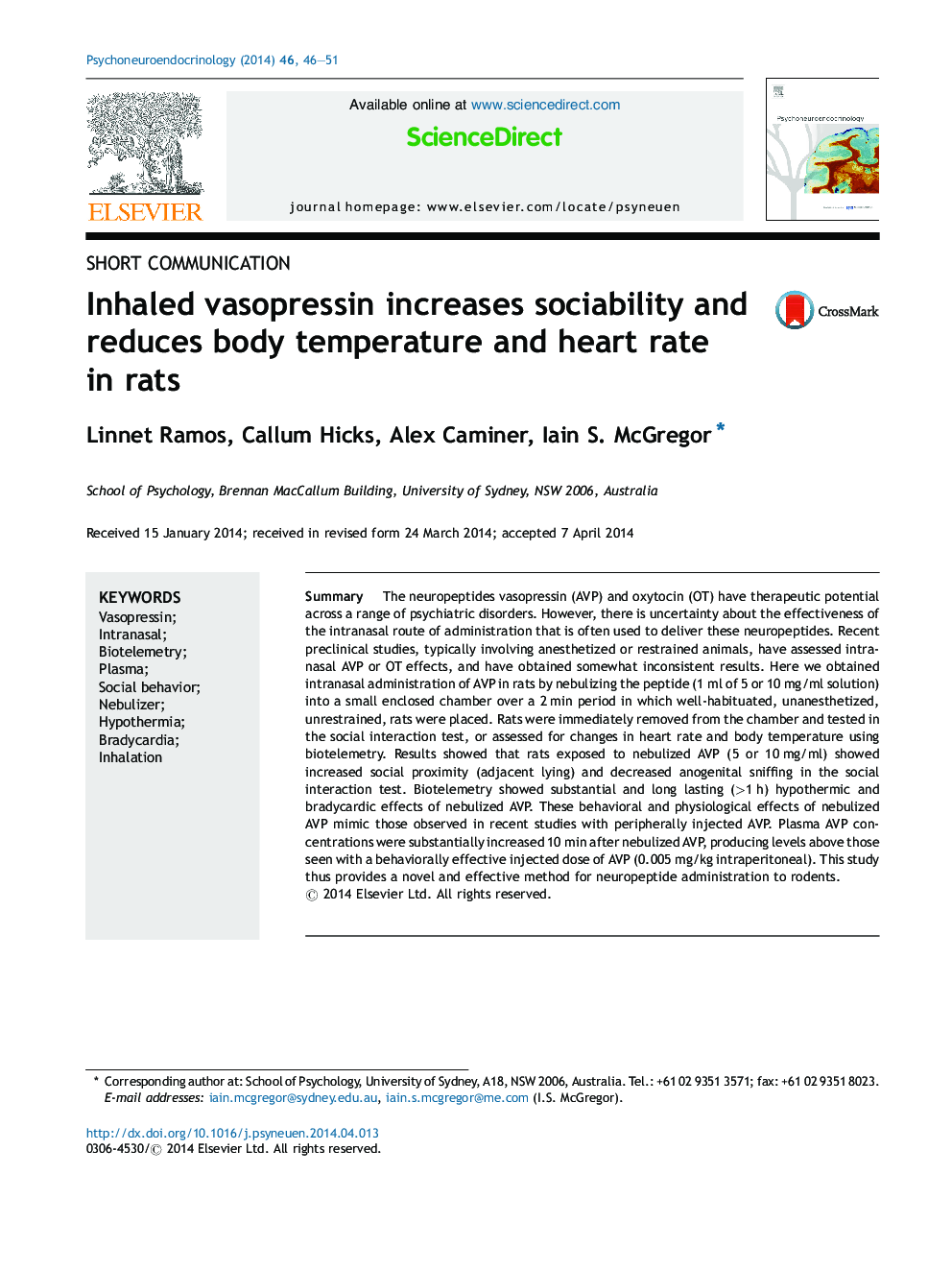| کد مقاله | کد نشریه | سال انتشار | مقاله انگلیسی | نسخه تمام متن |
|---|---|---|---|---|
| 6819751 | 547113 | 2014 | 6 صفحه PDF | دانلود رایگان |
عنوان انگلیسی مقاله ISI
Inhaled vasopressin increases sociability and reduces body temperature and heart rate in rats
ترجمه فارسی عنوان
وازوپرسین استنشاق اجتماعی را افزایش می دهد و دمای بدن و ضربان قلب را در موش کاهش می دهد
دانلود مقاله + سفارش ترجمه
دانلود مقاله ISI انگلیسی
رایگان برای ایرانیان
کلمات کلیدی
موضوعات مرتبط
علوم زیستی و بیوفناوری
بیوشیمی، ژنتیک و زیست شناسی مولکولی
علوم غدد
چکیده انگلیسی
The neuropeptides vasopressin (AVP) and oxytocin (OT) have therapeutic potential across a range of psychiatric disorders. However, there is uncertainty about the effectiveness of the intranasal route of administration that is often used to deliver these neuropeptides. Recent preclinical studies, typically involving anesthetized or restrained animals, have assessed intranasal AVP or OT effects, and have obtained somewhat inconsistent results. Here we obtained intranasal administration of AVP in rats by nebulizing the peptide (1Â ml of 5 or 10Â mg/ml solution) into a small enclosed chamber over a 2Â min period in which well-habituated, unanesthetized, unrestrained, rats were placed. Rats were immediately removed from the chamber and tested in the social interaction test, or assessed for changes in heart rate and body temperature using biotelemetry. Results showed that rats exposed to nebulized AVP (5 or 10Â mg/ml) showed increased social proximity (adjacent lying) and decreased anogenital sniffing in the social interaction test. Biotelemetry showed substantial and long lasting (>1Â h) hypothermic and bradycardic effects of nebulized AVP. These behavioral and physiological effects of nebulized AVP mimic those observed in recent studies with peripherally injected AVP. Plasma AVP concentrations were substantially increased 10Â min after nebulized AVP, producing levels above those seen with a behaviorally effective injected dose of AVP (0.005Â mg/kg intraperitoneal). This study thus provides a novel and effective method for neuropeptide administration to rodents.
ناشر
Database: Elsevier - ScienceDirect (ساینس دایرکت)
Journal: Psychoneuroendocrinology - Volume 46, August 2014, Pages 46-51
Journal: Psychoneuroendocrinology - Volume 46, August 2014, Pages 46-51
نویسندگان
Linnet Ramos, Callum Hicks, Alex Caminer, Iain S. McGregor,
